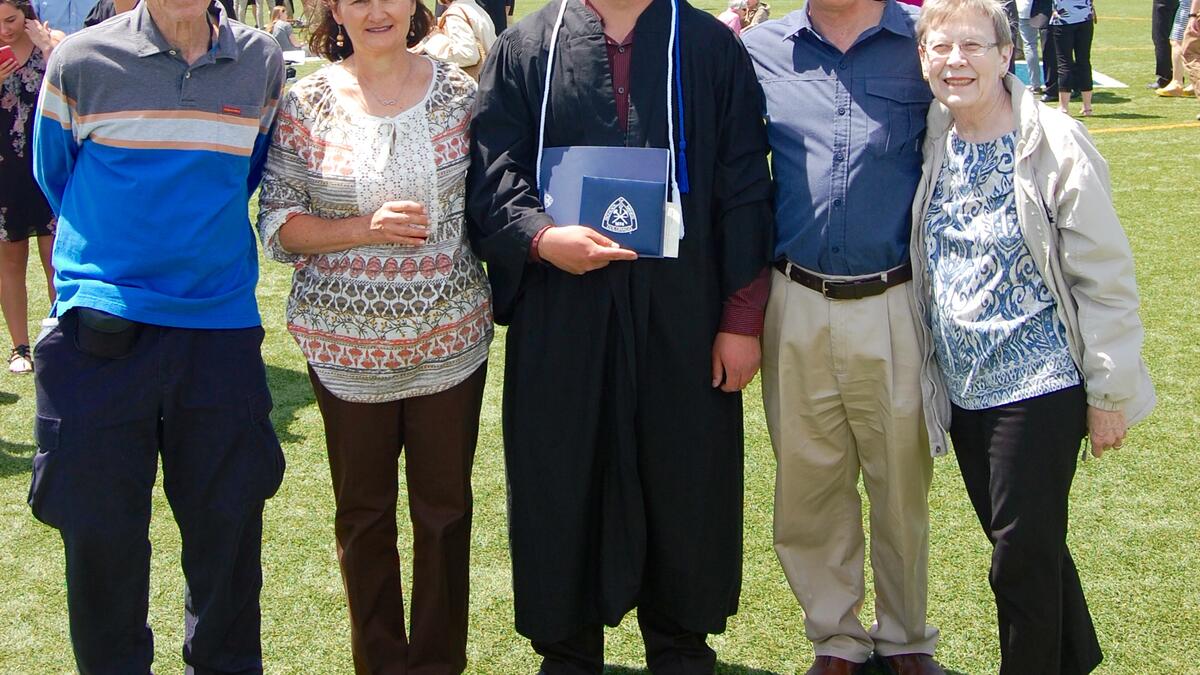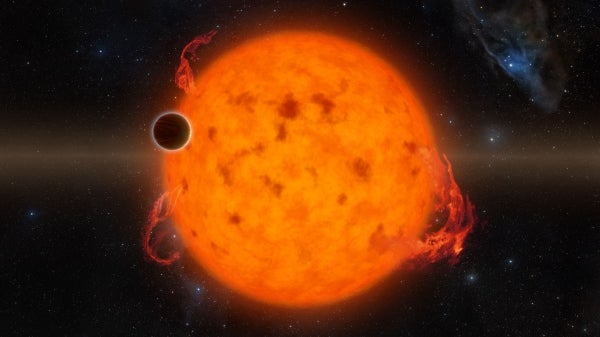ASU alumnus gives back through physics scholarship, professorship

ASU alumnus Wally Stoelzel (left) attends his grandson Evan’s graduation ceremony at the Colorado School of Mines. Also pictured are Evan’s parents and grandmother.
Wally Stoelzel can’t recall Newton’s laws of motion, but he certainly does not regret studying physics at Arizona State University.
“My grandkids often ask me if I am sorry that I studied physics since I only got to teach it a year or so,” said Stoelzel. “I tell them … it was a pleasure to have studied the basis for all the other sciences.”
In 1966, Stoelzel graduated from Arizona State University with a Master of Natural Sciences degree in physics with a goal to pursue a career as a teacher. He accepted a position as the Math and Science Department Chair of the Industrial Training Center for Aramco in Saudi Arabia, which took him across the globe. He taught math and physics to adult students who wanted to pursue science and engineering degrees. In addition, he taught the center’s math and science teachers to help them update their technical backgrounds.
When his position was eliminated, Stoelzel transferred to the electronic data processing technical group as a system analyst. He learned a variety of programming skills and languages. Some of his engineering projects included providing cost analysis for the Saudi Arabian Government and calculating oil volume in floating roof storage tanks for offloading to tankers. He also worked on a multitude of diverse technical projects during his eight-year Aramco tenure.
Upon returning to the U.S., Stoelzel became the manager of data processing at the Newspaper Printing Corporation. Then, he became part-owner of a digital equipment software firm. He also started a computer service bureau for accounting services and advertising signage.
After a couple years, Stoelzel’s businesses dissolved and he returned to his passion of teaching at the University of Texas at El Paso. He taught management information systems, computer science, programming and engineering applications courses. His career changed courses again when he became a portfolio manager for Paine Webber and then Smith Barney-Shearson Lehman-E.F. Hutton.
“Looking back it’s easy to see how my ASU physics background directly contributed to the varied employment opportunities which came my way even during the bad economic downturns,” he said.
Stoelzel is now retired, but his passion for learning and impacting the world has not come to a halt. He created the Wally Stoelzel Physics Scholarship and the Alan Wager Professorship in Physics Endowment in fond memory of professor Wager, former chair of the Department of Physics, and Glenna Curtis, former department secretary.
Wager recruited Stoelzel for a scholarship when he was a public-school teacher and, later, his graduate assistant, which made it possible for Stoelzel to study physics. Now, he hopes to give back and help relieve students of some of their financial burdens.
“Hopefully the students receiving this scholarship will be able to pursue their studies in physics with less worry,” Stoelzel said. “When times are not good, they’ll realize their physics background will allow them to pursue many vocations which were not evident when they left ASU.”
Andrew Svesko, a graduate student pursuing a doctoral degree in physics, was awarded this scholarship two years in a row. The scholarship has been a significant asset for helping Svesko accomplish his goals.
“My ultimate career goal is to become a professional educator,” Svesko said.. “The Wally Stoelzel Scholarship will help me achieve these goals by offering me the ability to focus more on research and can help pay for travel expenses for conferences and more.”
Thanks to the financial assistance he received during his doctoral program, Svesko now looks forward to one day being able to continue Stoelzel’s legacy of giving back.
“I hope I can give back, and the reason is simple: In order to continue the wheel of progress, future generations of scientists and engineers should be allowed the same opportunities that I have been given,” Svesko said. “Likewise, it’s a duty to give back in any way possible.”
More Science and technology

Real AI solutions helping people now
AI may be everywhere, but its impacts on day-to-day life are more surprising — and beneficial — than you might realize. From…

ASU forges strategic partnership to solve the mystery of planet formation
Astronomers have long grappled with the question, “How do planets form?” A new collaboration among Arizona State University,…

AI for AZ: ABOR funds new tools for state emergency response
A huge wildfire rages in the wilderness of Arizona’s White Mountains. The blaze scorches asphalt and damages area bridges,…